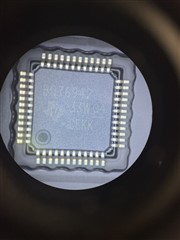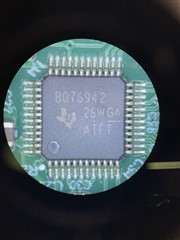Tool/software:
We've been having some troubles with a product prototype, where the BQ76942 will simply not respond to any I2C messages after the battery cells are replaced.
It's possible we're breaking the IC by violating the VC0 maximum voltage limit (due to random connection of cells if plugging in balance connector before main connector).
However, when I was replacing a BQ76942 with a fresh one bought from Mouser, I noticed the one I was replacing looked different.
This round of prototypes was assembled by a cheap turnkey PCB fab/assembler in China, and the BQ76942 chips they sourced look considerably different, as shown below.


The unused one (left) came from an authorized distributor (Mouser), while the one mounted on the PCB (right) came from the cheap turnkey manufacturer.
The suspicious one (right) does not have distinct laser lines in the TI logo (the Mouser one does, although it's hard to see in the photo), and the label is less centered. The molding of the package looks lower quality too.
We had no further I2C issues when I replaced it with the one from Mouser.
Are you aware of counterfeits being made of these ICs? Could the I2C issues be caused by a low quality fake IC? Or is it just variation between batches/factories, and the failing I2C is caused by something else?
Any input would be appreciated, thank you.

